Gardening, an activity as old as time itself, has grown into a beloved hobby for many.
An afternoon tending to your lush greens and vibrant blooms can undoubtedly bring a sense of tranquility and accomplishment.
But what makes gardening truly enjoyable and productive is having the right tool for every task at hand.
This article lists the top 60 gardening tool names that you must know, a gardener’s arsenal if you will.
Knowing these tools will have a significant impact on your gardening experience since it can make your work easier, more efficient, and even more fun.
Contents
Gardening is both an art and a science, requiring skill, patience, and the right tools. Whether you’re a seasoned gardener or just starting out, knowing about different gardening tools and their uses is essential.
From basic hand tools to more sophisticated machinery, each tool has a specific role that helps in creating and maintaining a beautiful garden.
In this section, we’ll explore some of the most essential gardening tools, discussing their functions, benefits, and why they are indispensable to gardeners.
These tools not only make gardening tasks easier but also more efficient and enjoyable. Let’s dig into the world of gardening tools and uncover the secrets behind their functionality.
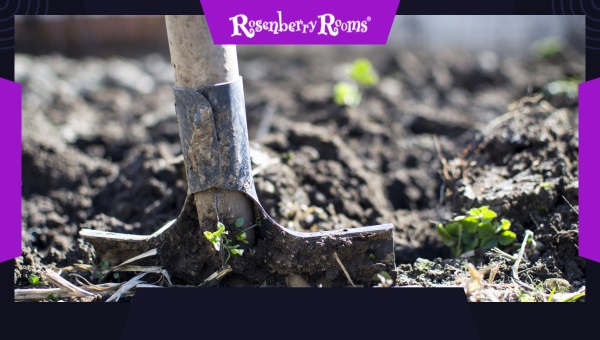
A shovel is a quintessential tool in any gardener’s arsenal, indispensable for a variety of tasks. Its primary use is for digging, making it essential for planting trees, shrubs, and large plants.
The shovel’s broad, slightly curved blade enables gardeners to move soil, compost, or mulch efficiently. Its design varies, with some having a pointed tip to penetrate hard soil, while others have a flat edge suitable for slicing through sod or edging beds.
Ergonomically designed handles and durable materials like steel or aluminum make modern shovels both comfortable to use and long-lasting.
Shovels are not just tools; they are trusted companions in transforming and maintaining the health and aesthetics of a garden.
The spade, often confused with a shovel, is distinct in its shape and purpose. Featuring a flat, rectangular blade, a spade is ideal for cutting into the soil, edging garden beds, and transplanting small shrubs and plants.
Its sharp edges make it perfect for creating neat, straight borders around garden beds or walkways.
Spades are also excellent for slicing through roots or tough soil, thanks to their sturdier build and more manageable size. With handles designed for leverage and control, spades offer precision and ease of use.
Whether it’s shaping soil, trenching, or turning earth, a spade is a tool that gardeners find invaluable for detailed and precise garden work.
A home is a versatile and time-tested tool essential for weed control and soil cultivation. With a long handle and a flat blade set at a right angle, it allows gardeners to work standing up, reducing back strain.
The hoe is used to chop off weeds at their base, aerate and loosen the soil, and create furrows for planting seeds.
Different types of hoes, such as the paddle, stirrup, or Dutch hoe, cater to specific gardening needs, offering precision and efficiency.
Regular use of a hoe in the garden helps in maintaining soil health and keeping weeds at bay, making it an indispensable tool for both vegetable gardens and flower beds.
The rake is a fundamental garden tool known for its simplicity and effectiveness.
Primarily used for gathering leaves, grass clippings, and other debris, it is also excellent for leveling soil, spreading mulch, or preparing seedbeds.
Garden rakes come in various types, including leaf rakes with flexible tines and bow rakes with rigid tines.
The former is ideal for collecting lightweight debris without damaging plants, while the latter is more suited for heavier garden work like breaking up soil clumps.
A rake’s long handle provides good reach, making it easy to tidy up large areas. Durable and easy to handle, a rake is a must-have for keeping your garden neat and orderly.
Also Read: Apartment Gardening For Beginners [Secret To Creating A Lush Oasis]
The garden trowel is a small but mighty tool, perfect for numerous gardening tasks. Its pointed, scoop-shaped blade is ideal for digging small holes, transplanting seedlings, mixing in fertilizer or other additives, and weeding.
Trowels are especially useful in flower beds, vegetable gardens, and container gardens, where precision is key.
The ergonomic handle design in many modern trowels reduces hand and wrist fatigue, making them comfortable for prolonged use.
With variations in blade size and shape, gardeners can choose a trowel that best suits their specific gardening style and needs. Compact and versatile, the trowel is a tool that no gardener can do without.
The garden fork, often underestimated, is a powerful tool for aerating and turning soil. Its sturdy, sharp tines can penetrate tough soil, break up hard pans, and incorporate compost or manure into the earth.
It’s particularly useful in areas too tight for a shovel or where roots and rocks make the soil hard to penetrate.
Garden forks come in different sizes and tine configurations, tailored for different tasks like digging, harvesting root vegetables, or even turning compost.
The design of a garden fork allows for more precision and less soil disruption than a shovel, making it ideal for working in established beds or around perennials.
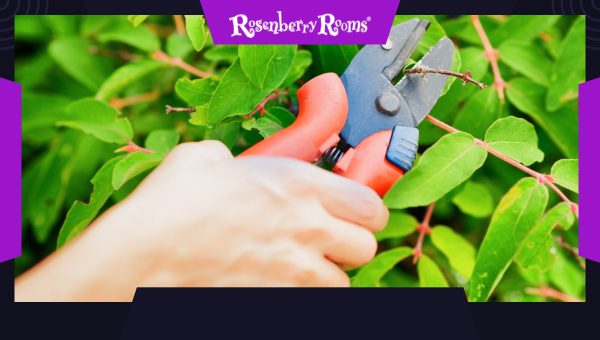
Pruners, often referred to as secateurs, play a critical role in the healthy upkeep of plants. Designed for precision, they are used to trim and shape plants, snip dead or overgrown branches, and cut back perennials.
The unique feature of pruners is their ability to make clean cuts that promote plant health, preventing damage and disease.
With various types like bypass, anvil, and ratchet, each serves a specific purpose, catering to different plant types and cutting needs.
Ergonomic handles and sharp blades make them a favorite among gardeners for their ease of use and effectiveness in maintaining a garden’s aesthetic and health.
Hedge trimmers are the go-to tool for maintaining and shaping hedges and shrubs. They come in various forms, including manual, electric, and gas-powered, each suitable for different hedge sizes and gardeners’ preferences.
These trimmers enable clean, straight cuts, ensuring hedges look neat and tidy. Electric and gas-powered models offer extra power and reach, ideal for larger or denser hedges.
Manual trimmers, on the other hand, provide more control and precision for smaller tasks. Regular use of hedge trimmers not only enhances a garden’s appearance but also promotes healthy growth and dense foliage.
A lawn mower is indispensable for anyone with a grassy area in their garden. It’s designed to cut grass to a desired height evenly, keeping lawns neat and healthy.
There are various types, including push, riding, and self-propelled mowers, each catering to different lawn sizes and user preferences.
Modern lawnmowers often come with adjustable settings for cutting height and speed, mulching capabilities, and even programmable features in robotic mowers.
Regular mowing not only improves the lawn’s appearance but also encourages denser growth and reduces weed proliferation.
The wheelbarrow is a simple yet essential tool for transporting soil, compost, plants, and other materials around the garden.
Its design, featuring a single wheel and two handles, offers balance and leverage, making it easier to carry heavy loads. Wheelbarrows come in various materials like metal or plastic, each offering different benefits in terms of durability and weight.
For larger gardens or more substantial tasks, wheelbarrows are invaluable, saving time and effort in moving materials and keeping the garden tidy.
Explore More: 35 Best Modern Fireplace Ideas 2024 [Heat Up Your Home Decor]
Garden shears are essential for the precise cutting and shaping of plants. Unlike pruners, they have longer blades, making them ideal for trimming and shaping hedges, cutting back perennials, and deadheading flowers.
The long blades allow for straight, even cuts, essential for maintaining the aesthetic of formal gardens.
Available in different sizes and blade types, garden shears can be chosen based on the specific needs of the garden and the plants being tended to.
Garden gloves are a must-have for protecting hands during various gardening tasks. They prevent blisters, protect against thorns and sharp objects, and keep hands clean.
Gloves come in a variety of materials, like cotton, leather, or rubber, each offering different levels of protection and comfort. Some are waterproof ideal for wet conditions, while others have reinforced fingertips for extra durability.
Choosing the right gloves can enhance the gardening experience by providing comfort and safety.
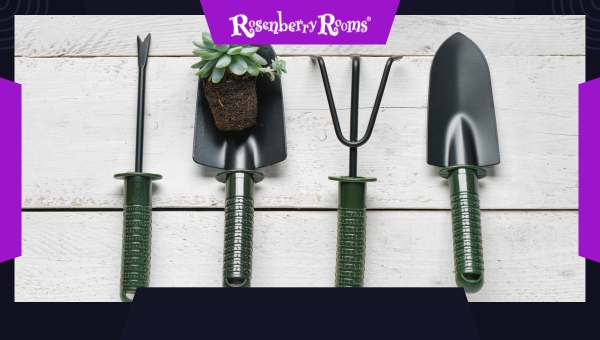
A weeder is a specialized tool designed to remove weeds efficiently without harming nearby plants. Its slender, forked design allows it to get underneath the weed, including the roots, for complete removal.
Weeders come in various styles, including short-handled for up-close work and long-handled for standing use.
Regular weeding keeps gardens looking neat and prevents weeds from competing with desired plants for nutrients and light.
The bulb planter is a tool specifically designed for planting bulbs at the correct depth with minimal effort. Its cylindrical or cone-shaped design removes a core of soil, creating a perfect hole for a bulb.
Some models have depth markings for precision planting, ensuring bulbs are neither too deep nor too shallow.
This tool is especially useful for planting large numbers of bulbs efficiently, making it a seasonal favorite for gardeners.
Distinct from a leaf rake, a garden rake has rigid, short tines and is used for breaking up soil, removing debris, and leveling ground in preparation for planting.
Its strong tines can also help in removing small rocks and smoothing soil before seeding or laying sod.
Garden rakes are sturdy and provide good leverage, making them a fundamental tool for soil preparation and maintenance.
A garden hose is essential for watering plants, especially in larger gardens. Available in various lengths and with different nozzle options, it allows for adjustable water pressure and spray patterns.
Hoses can be lightweight or heavy-duty, and some are designed to be kink-resistant. An efficient garden hose saves time and effort in watering, ensuring plants receive the right amount of water throughout the garden.
Also Read: 25 Best Home Decor Brands In 2024 [Upgrade Your Living Spaces]
A watering can be a fundamental tool for any gardener, offering a simple and efficient way to water plants. It’s particularly useful for indoor plants, small outdoor gardens, or specific areas where a hose isn’t practical.
Watering cans come in various sizes and designs, with different spout types to control water flow.
Some have a long spout for reaching into dense foliage or hanging plants, while others have a rose (a detachable sprinkler head) for a gentle shower that won’t disturb the soil or delicate plants.
This tool is essential for precise watering, ensuring that each plant receives the right amount of moisture.
The garden knife, often known as a soil knife or hori hori, is a versatile tool used for cutting, digging, and planting.
With a serrated edge on one side and a smooth edge on the other, it’s useful for cutting through roots, dividing plants, or opening bags of soil.
Its pointed tip is ideal for digging small holes or weeding. Durable and easy to handle, a garden knife is a compact tool that performs multiple functions, making it a favorite among gardeners for its versatility and efficiency.
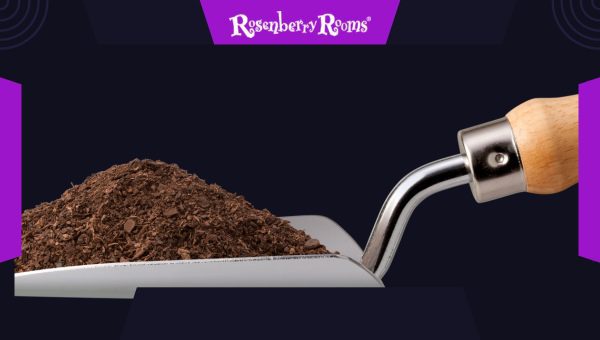
A soil scoop is an invaluable tool for handling soil, fertilizers, and other small materials. Its deep, curved design allows for efficient scooping and transferring of materials without spillage.
Soil scoops are particularly useful when potting plants, adding soil amendments, or measuring out fertilizers.
They come in various sizes and materials, with some having measurement markings for precise use. Lightweight and easy to use, a soil scoop is a handy tool for a wide range of gardening tasks.
A garden dibber is a simple yet effective tool used for making holes in the soil for planting seeds or bulbs. Typically, a pointed stick or rod it allows gardeners to create holes of consistent depth and spacing.
This is particularly useful for sowing seeds in rows or for planting bulbs at the correct depth.
Garden dibbers come in various designs, with some featuring depth markings and comfortable handles. They are a basic but essential tool for precise planting.
Explore More: Top 70 Wayfair Alternatives [Get Your Perfect Home Decor In 2024]
A leaf blower is a powerful tool used for clearing leaves, grass clippings, and other debris from lawns and garden paths.
Available in electric, battery-powered, and gas models, leaf blowers offer various levels of power and mobility. Some models also have vacuum and mulching capabilities, providing additional utility.
A leaf blower is especially useful in large gardens or during fall when leaves can quickly accumulate, saving time and effort in garden cleanup.
A pruning saw is designed for cutting thicker branches that are too large for pruners or loppers. With sharp, curved blades, pruning saws make quick work of trimming branches, shaping trees and shrubs, and removing dead wood.
They come in various sizes and styles, including folding saws for portability and bow saws for larger, tougher jobs.
The tool’s design allows for clean cuts that promote quick healing of the plant, making it a vital tool for maintaining the health and appearance of woody plants.
A garden spading fork is a tool with sturdy tines used for breaking up and turning over soil, especially in established beds where a spade might damage roots.
It’s also great for incorporating compost into the soil, harvesting root vegetables, and aerating compacted ground.
The design of a spading fork allows for better soil penetration and less effort than a spade, making it an excellent tool for preparing and maintaining garden beds.
A garden roller is used to level soil or newly laid sod and to compact seedbeds for a uniform garden surface. Typically filled with water or sand for weight, garden rollers consist of a heavy cylindrical drum attached to a handle.
They are especially useful after seeding a lawn or repairing turf areas, ensuring good seed-to-soil contact for improved germination rates. A garden roller is a valuable tool for achieving a professional-looking, even lawn.
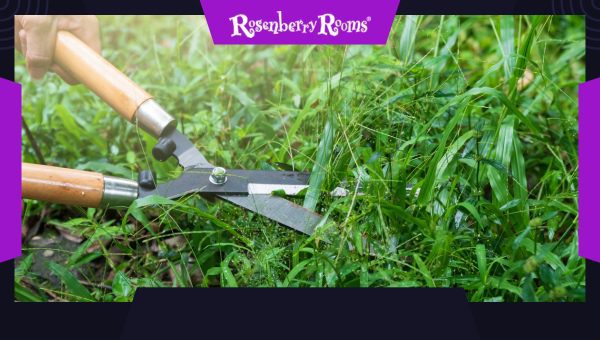
Grass shears are designed for trimming grass in areas where a lawn mower can’t reach, such as around flower beds, under bushes, or along edges.
They have long, sharp blades and are available in manual or powered models. Some grass shears are designed with swiveling blades for vertical and horizontal cutting, offering flexibility and precision.
Compact and easy to maneuver, grass shears are essential for detailed lawn care and maintaining neat edges.
A garden kneeler is a comfort tool designed to reduce knee and back strain while working at ground level. It’s often a dual-purpose tool, serving as a cushioned pad for kneeling or a seat when turned over.
Many garden kneelers come with handles to aid in standing up and carrying. Some models also have pockets or compartments for holding small tools.
This tool is particularly beneficial for gardeners who spend extended periods working in the garden, providing comfort and support.
Also Read: 15 Best Floor Couches Of 2024 [Redefine Comfort At Home]
A garden brush is a crucial tool for keeping outdoor spaces clean and tidy. Its bristles are specifically designed to sweep up leaves, dirt, and debris from paths, patios, and decking.
Some garden brushes feature stiff bristles for tackling tough dirt, while others have softer bristles for delicate surfaces. Their long handles offer ease of use, reducing the need to bend over and thus minimizing back strain.
Garden brushes are not only functional but also help maintain the aesthetic appeal of a garden by keeping walkways and seating areas neat and welcoming.
Garden edgers are specialized tools used to create clean, precise lines between lawns and garden beds or pathways.
They come in various forms, including manual edging tools with cutting blades and powered edgers for larger or more frequent tasks.
Using a garden edger allows gardeners to define spaces clearly, enhancing the garden’s overall look. This tool is especially useful for maintaining the edges of turf, preventing grass from creeping into flower beds or vegetable gardens, thereby contributing to a well-manicured outdoor space.
A garden cart is an invaluable tool for transporting supplies, tools, soil, plants, and debris around the garden. Its design typically includes a deep bed, sturdy wheels, and a handle for easy maneuvering.
Garden carts vary in size and capacity, allowing gardeners to choose one that best fits their needs. They are particularly helpful for those with larger gardens or for tasks that involve moving heavy or bulky items.
The use of a garden cart can significantly reduce the physical effort required in gardening, making it a favorite among garden enthusiasts.
A garden apron is both a practical and protective garment for gardeners. It usually features multiple pockets for holding tools, seeds, and other small gardening essentials.
Made from durable materials, garden aprons safeguard the gardener’s clothing from dirt, water, and wear. They often come in adjustable sizes to fit comfortably and provide ease of movement.
This tool is a favorite for gardeners who value convenience and efficiency, as it keeps all necessary tools within easy reach while working in the garden.
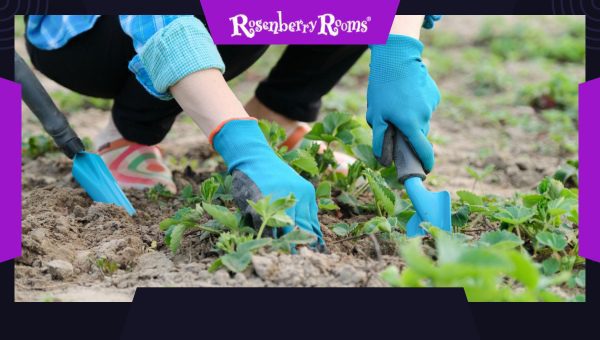
The hand cultivator is a small, hand-held tool used to aerate the soil, remove weeds, and mix in nutrients. Its tines are designed to break up the soil surface, promoting better water and nutrient absorption.
This tool is particularly useful in flower beds and vegetable gardens where careful cultivation is needed.
Hand cultivators come in various shapes and sizes, allowing gardeners to choose one that fits their grip and gardening style. Compact and easy to use, this tool is essential for maintaining soil health and plant vitality.
Garden sprinklers are an effective and convenient way to water lawns and garden beds. They come in various types, such as oscillating, rotating, and stationary, each designed to cover different areas and patterns.
Sprinklers can be adjusted to control the water flow, ensuring even coverage and preventing water wastage. They are particularly useful during dry periods or for gardeners who prefer an automated watering system.
With a garden sprinkler, maintaining a lush and healthy garden becomes easier and more efficient.
Garden prongs, also known as garden forks, are tools with several sharp, sturdy tines used for breaking up, aerating, and turning soil.
They are particularly effective in dense, clay-rich soils where a shovel might be inadequate. Garden prongs can also be used for harvesting root vegetables and incorporating organic matter into the soil.
Their design allows for deep soil penetration, improving soil structure and root growth. This tool is essential for gardeners who deal with compacted soil or who are focused on soil health and plant growth.
A garden sprayer is a device used for applying liquid substances like water, fertilizers, herbicides, and pesticides.
These sprayers come in various capacities and types, including hand-held, backpack, and wheeled models. Garden sprayers offer precise control over the amount and location of the liquid being applied, making them ideal for targeted treatments.
They are essential for maintaining plant health, controlling pests, and applying nutrients, especially in large gardens or for plants with specific needs.
Garden stakes are simple yet essential tools used to support plants as they grow. They come in various materials like wood, bamboo, or metal and in different lengths to accommodate plants of various sizes.
Stakes are especially useful for climbers, tall plants, or those with heavy blooms that might otherwise droop or break.
By providing support, garden stakes help in maintaining plant structure and health, contributing to a well-organized and visually appealing garden.
A garden weeding fork is a small, hand-held tool designed for removing weeds, especially those with deep roots.
Its sharp, narrow tines are adept at getting underneath the weed and prying it out of the soil with minimal disturbance to surrounding plants. This tool is particularly useful in densely planted beds where precision.
Explore More: Maiden Home Varick Sofa Review 2024 [After 1 Month of Use]
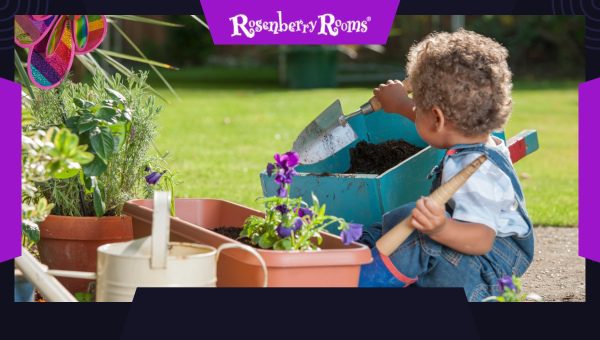
A garden dibble, also known as a dibber, is a pointed tool used to make holes in the soil for planting seeds, bulbs, and seedlings.
Typically made of wood or metal, its simple yet effective design allows for creating uniform planting depths.
This tool is especially popular among gardeners who plant bulbs or start plants from seeds, as it ensures consistent spacing and depth.
Lightweight and easy to handle, the garden dibble is a must-have for precision planting and is particularly useful in creating well-organized and evenly-spaced gardens.
A lawn aerator is a tool designed to create small holes in the soil to allow air, water, and nutrients to penetrate the grass roots. This process helps the roots grow deeply and produces a stronger, more vigorous lawn.
Aerators come in various forms, such as spike aerators and plug (core) aerators, each serving to alleviate soil compaction.
Regular use of a lawn aerator can significantly improve the health and appearance of a lawn, making it an essential tool for those seeking a lush, green lawn.
A bulb auger is a gardening tool used for drilling holes in the soil, ideal for planting bulbs, bedding plants, and seedlings. Often attached to a drill, this spiral-shaped tool makes planting quick and efficient.
The bulb auger is especially useful for gardeners who plant large numbers of bulbs, as it significantly reduces the time and effort required compared to using a traditional spade or trowel.
Its design ensures that each hole is of consistent depth and width, providing an optimal environment for bulb growth.
The garden scoop is a versatile tool, perfect for transferring soil, compost, fertilizers, and other granular materials. It’s shaped like a deep spoon or cup and often made of durable materials like metal or heavy-duty plastic.
Garden scoops come in various sizes, allowing gardeners to choose one that best suits their needs.
They are especially useful for filling pots, mixing soil amendments, or applying fertilizers, making them a handy tool for both container gardening and general garden maintenance.
Garden markers are used to label plants, seeds, or rows in a garden. They come in various forms, such as stakes, labels, or tags, and can be made from materials like wood, metal, or plastic.
Garden markers are essential for keeping track of plant varieties, planting dates, and care instructions, especially in a diverse garden.
They are particularly useful during the growing season when identifying plants or remembering specific care requirements is crucial.
A garden spade fork, a hybrid between a spade and a garden fork, combines the features of both tools.
It has a flat, spade-like shape with tines like a fork, making it suitable for digging and turning soil, as well as aerating and breaking up clumps.
This tool is particularly effective in heavy or clay soils and can also be used for incorporating organic matter into the soil.
The garden spade fork is a versatile tool, ideal for gardeners who require the functionality of both a spade and a fork.
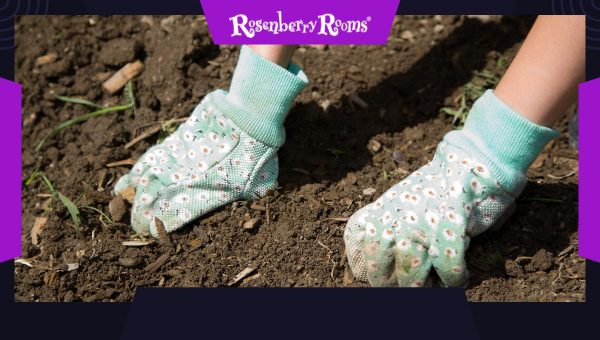
A garden hand fork is a small, hand-held tool with several sturdy tines used for loosening soil, weeding, and transplanting small plants.
It offers more precision and control than a larger fork, making it ideal for working in tight spaces or around delicate plants.
The garden hand fork is an essential tool for container gardening, flower beds, and herb gardens, where careful cultivation and weeding are necessary.
The garden wheel hoe is a traditional, wheel-mounted tool used for cultivating soil, removing weeds, and shaping rows in a garden.
It consists of a long handle with a wheel or wheels at the end and attachments like hoes, plows, or cultivators.
The wheel hoe is efficient for managing large garden areas, reducing the time and effort required for weeding and soil cultivation compared to hand tools.
It’s particularly popular among organic gardeners and those with larger vegetable gardens.
A garden seed spreader is a tool designed to distribute seeds, fertilizer, or granular products evenly across the soil.
These spreaders come in various styles, including hand-held, push, or tow-behind models, suitable for different garden sizes and needs.
Using a seed spreader ensures uniform distribution, improving germination rates and growth.
It’s an essential tool for those seeding lawns, flower beds, or large areas with cover crops.
A garden soil sieve, or soil sifter, is used to remove clumps, stones, and debris from soil or compost, creating a fine, uniform texture.
This tool consists of a frame with a mesh or perforated bottom and can come in various mesh sizes for different levels of fineness.
Soil sieves are especially useful for preparing soil for seed starting, potting mixes, or any application where a smooth, consistent soil texture is desired.
They help in ensuring optimal growing conditions for plants, making them a valuable tool for gardeners focused on soil quality and plant health.
Also Read: How To Fix A Sagging Couch? [Practical Tips For Sofa Repair]
A garden pruner holster is a convenient accessory designed to hold pruners or secateurs. It’s typically made of durable materials like leather or heavy-duty fabric, providing easy access and safe storage for the sharp tool.
The holster can be attached to a belt, allowing gardeners to keep their pruners handy as they move around the garden.
This is particularly useful for ensuring that pruners are readily accessible for pruning, deadheading, or harvesting tasks while also promoting safety by protecting the gardener from the sharp edges.
A garden trellis is a framework used to support climbing plants and vines. It can be made from various materials like wood, metal, or plastic and comes in numerous designs, from simple lattices to elaborate structures.
Trellises are not only functional, helping plants grow vertically and saving space, but they also add an aesthetic element to the garden.
They are ideal for growing climbing flowers, vegetables like peas and beans, and vining fruits, providing both a gardening solution and a decorative feature.
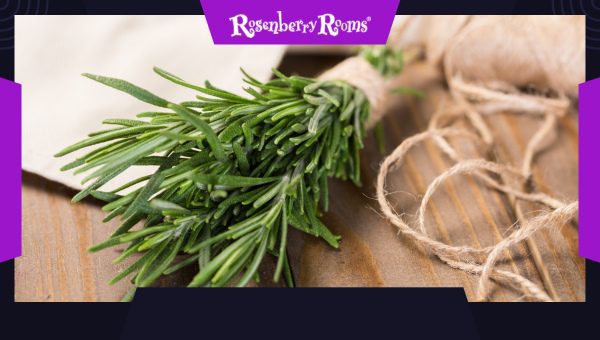
Garden twine is a versatile tool used for a variety of tasks, such as tying plants to supports, marking rows, or even crafting garden structures.
It’s usually made from natural materials like jute or hemp, which are sturdy yet biodegradable.
Garden twine is particularly useful for securing plants to stakes or trellises, ensuring they grow in the desired direction, and providing support to heavy fruiting branches. Lightweight and easy to use, garden twine is a staple in any gardener’s toolkit.
A garden stake driver is a tool designed to help gardeners drive stakes into the ground more easily and securely.
It’s typically a heavy, cylindrical tool that fits over the top of a stake, allowing the gardener to hammer the stake into the ground without damaging it.
This tool is especially useful for setting up fencing, trellises, and plant supports in hard or compacted soil.
By using a stake driver, gardeners can ensure that their stakes are firmly anchored, providing reliable support for plants or structures.
A garden bulb planter is a tool designed for planting bulbs at the correct depth with minimal effort. It removes a core of soil to create a hole where the bulb can be placed before covering it with soil.
Bulb planters come in various forms, including handheld versions and long-handled models for standing use.
This tool is particularly helpful for planting large numbers of bulbs efficiently and with consistent depth, which is crucial for optimal growth.
A garden weed torch, or flame weeder, is a tool used for weed control through thermal weed killing. It produces a flame that is directed at weeds, causing the plant cells to burst and the weeds to die.
This method is chemical-free and can be effective in controlling weeds between garden rows, on driveways, or in other areas where traditional weeding is difficult.
Garden weed torches offer a quick, organic way to manage weeds, though they should be used with caution due to the risk of fire.
A garden leaf collector is a tool designed to assist in the efficient gathering and removal of leaves and other garden debris. It can be a simple, hand-held device like a scoop or a more complex machine like a leaf vacuum.
These collectors make the process of cleaning up fallen leaves faster and less labor-intensive, especially in large gardens or yards with numerous trees.
They help keep the garden tidy and can also aid in creating compost from the collected leaves.
Explore More: How To Ship A Mattress In 2024? [Tips For Safe Shipping]
The garden leaf rake is a specific type of rake designed primarily for gathering leaves, twigs, and other light debris.
It usually features a wide head with flexible tines made of materials like plastic or metal, which are effective at raking over a variety of surfaces without damaging the lawn or beds.
The flexibility of the tines allows the rake to glide over the grass and collect leaves efficiently.
This tool is essential for fall cleanup and for keeping the garden and lawn clear of debris that could hinder growth or create a habitat for pests.
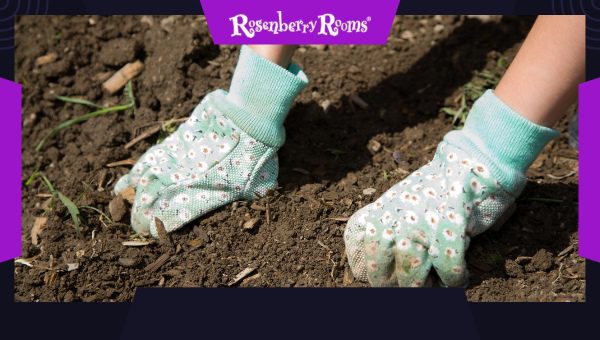
Garden hand plows, reminiscent of traditional farming tools, are incredibly useful for small-scale cultivation and tilling. Designed to break up, aerate, and turn over the soil, they prepare the garden bed for planting.
These plows are especially handy for working in tight spaces or raised beds where larger equipment can’t reach. Their long handles provide leverage, making it easier to work the soil without too much strain on the back.
Hand plows can also be used to create furrows for seeds or bulbs, combining the functions of tilling and planting in one tool.
Lightweight yet sturdy, they are a favorite among gardeners who prefer a hands-on approach to preparing their soil.
A garden leaf bag is an indispensable tool for efficient yard cleanup. Unlike traditional bags, these are specifically designed for collecting and transporting garden debris such as leaves, grass clippings, and small branches.
Many models are made from durable, weather-resistant materials and feature handles for easy carrying. Some even come with collapsible designs for convenient storage when not in use.
Their wide openings and stand-up design make it easy to fill without needing a second pair of hands, streamlining the cleanup process.
Garden leaf bags are a practical solution for gardeners looking to keep their outdoor spaces tidy with minimal effort.
The garden watering wand is a boon for gardeners, offering an extended reach and gentle watering capabilities.
Ideal for watering hanging baskets, plants in hard-to-reach areas, and delicate seedlings, these wands prevent the need for bending or stretching.
They come with adjustable nozzles that can change the water flow from a fine mist to a steady stream, allowing for customized watering based on the plant’s needs.
Watering wands are also great for gently soaking the soil without causing erosion or disturbing the plant.
Their ergonomic handles and lightweight design make them easy and comfortable to use, even for prolonged periods.
A garden tap splitter is a simple yet ingenious device that transforms a single tap into multiple water sources. It’s perfect for gardeners who need to run a hose, a drip irrigation system, and other watering devices simultaneously.
By providing multiple outlets, tap splitters make it possible to manage various watering tasks efficiently without constantly attaching and detaching hoses.
Many models come with individual valves for each outlet, allowing for precise control over water flow to different areas of the garden.
This tool is essential for optimizing water usage and ensuring that all parts of the garden receive adequate moisture.
Also Read: Trundle Beds 101 Guide 2024 [Tips For Your Trundle Beds]
The garden compost bin is a key component for sustainable gardening, allowing gardeners to turn organic waste into nutrient-rich compost.
These bins come in various sizes and designs, from simple containers to sophisticated systems with multiple chambers for different stages of decomposition.
By composting kitchen scraps, yard waste, and other organic materials, gardeners can create a natural fertilizer that enriches the soil and promotes healthy plant growth.
Compost bins also help reduce waste and minimize the need for chemical fertilizers, making them an eco-friendly addition to any garden.

A garden harvest basket is not just a container but a celebration of the gardener’s hard work.
Designed to hold fruits, vegetables, and flowers, these baskets are typically lightweight and durable, making them ideal for collecting and transporting garden produce.
Many feature open-weave designs for ventilation, ensuring that the harvest stays fresh. Some harvest baskets also come with convertible designs, allowing them to double as colanders for washing fruits and veggies right in the garden.
Their practicality and aesthetic appeal make them a favorite tool for gardeners to display and use during the bountiful harvest season.
A garden shovel or a spade is often considered the most important gardening tool. Its versatility allows for digging holes, moving soil, and even edging garden beds.
Yes, you can. A home is actually one of the best tools for weeding. Its design allows you to cut weeds at their base, keeping your garden clean and healthy.
The type of rake needed depends on what you plan to use it for. Leaf rakes are suited for gathering light debris, while bow rakes are ideal for heavier tasks like breaking up soil clumps.
A trowel’s compact size and precision make it an essential tool even if you already have a shovel. It’s particularly useful in small gardens or when transplanting seedlings.
It would be best if you considered using a garden fork instead of a shovel when dealing with hard soil or when you need to till without disrupting surrounding plants.
The function and importance of each gardening tool are crucial to elevating your gardening experience, maximizing your effort, and nurturing a thriving garden.
With their unique features and capabilities, these tools are specifically designed to make your work easier, more efficient, and enjoyable. Make sure you equip yourself with the right set of tools to enjoy a fruitful gardening experience.
In the end, remember that the secret behind a lush and beautiful garden doesn’t solely lie in having all possible tools but understanding their purpose and knowing how to use them effectively.